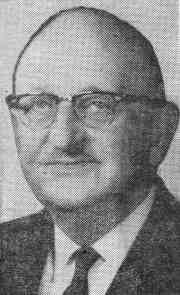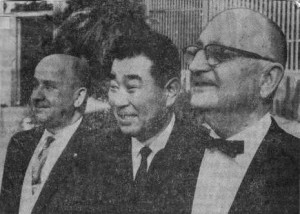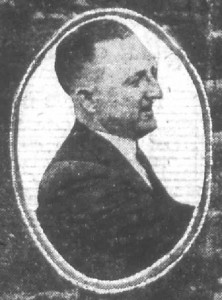Significant imprint upon Oakland, yet he’s slipped from memory

(From a 1964 Oakland Tribune article)
Architectural historian Phoebe Cutler [1998] identified a paradox of Gilkey’s legacy: “Landscape architect Howard Gilkey had more effect on the city of Oakland than most of its mayors and city councilmen yet his name and reputation have virtually disappeared from the memory of the Bay Area.”
Many prominent works in Oakland
Besides the Cleveland Cascade, work attributed to Gilkey includes Woodminster Amphitheater and Cascade; an earlier City Hall Plaza; the original duck pond on Lake Merritt; the arboretum in Knowland State Park; Lakeside Drive; and the grounds of Highland Hospital.
In 1921 and 1922 Gilkey was city park engineer and acting city planning engineer for the City of Oakland. It was presumably during this period that he designed the Cleveland Cascade.
Although he was reported to have done much of the initial planning for the Woodminster Cascade, Arthur Navlet [1976] explained that “Unfortunately, [Gilkey] was denied the pleasure of building it because he expected fabulous fees for his services.”
In 1964, Gilkey was named “Man of the Year” by the Business Men’s Garden Club of Oakland.
Garden Show brought Gilkey much attention
Gilkey became well known for being the designer of twenty three California Spring Garden Shows held in Oakland.
Gilkey was one of the four who founded in 1929 or 1930 the Business Men’s Garden Club of Oakland, which initially produced the shows. A significant Gilkey innovation, beginning with the third show, was to adopt a theme that structured the show as a whole. Themes included “Moorish Gardens,” “Formal Garden,” “Kew to Kyoto,” “Valley of the Giants,” and “Enchanted Forest” and could involve the reconstruction of a redwood tree (bark chip by bark chip) or a mountain cateract. Long-time friend and prominent Oakland nurseryman, Arthur Navlet [1976] reflected after Gilkey’s death:
“Howard’s concept of flower shows with themes was unique. At the time, the Philadelphia, New York and Boston shows were tops in the nation. These shows used the unlimited resources of wealthy eastern estates. Their individual exhibits surpassed ours in quality of plant material, but each exhibit was unrelated, so their shows were a beautiful collection of exhibits. There was no thought of a unified picture or theme.”
The shows, and Gilkey, were the subject of a Saturday Evening Post issue in October 1950 with the subtitle “The fellows think nothing of rebuilding a redwood forest or a mountain cataract. Navlet said the article “made a national figure of Howard, and drew attention of the world to the great shows he created.”
Sources of biographical information
We know of three particularly comprehensive sources that give retrospectives of all or a portion of Howard Gilkey’s life.
A 1946 article in the Oakland Post-Enquirer, announcing that Gilkey was being sued for divorce, gave a surprisingly complete — given the nature of the occasion — work history to that date for Gilkey.
A 1947 “Your Town” column by Jack Burroughs in the Oakland Tribune gave an alternative and more-narrative biography, with special attention given to Gilkey’s early work with Luther Burbank.
In 1976 his long-time friend Arthur Navlet contributed a posthumous retrospective covering the period 1927 through the end of Gilkey’s life.


